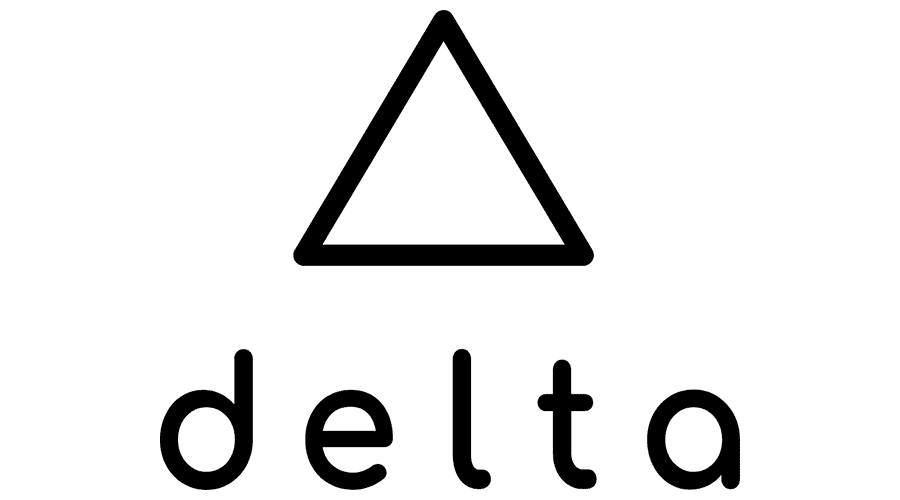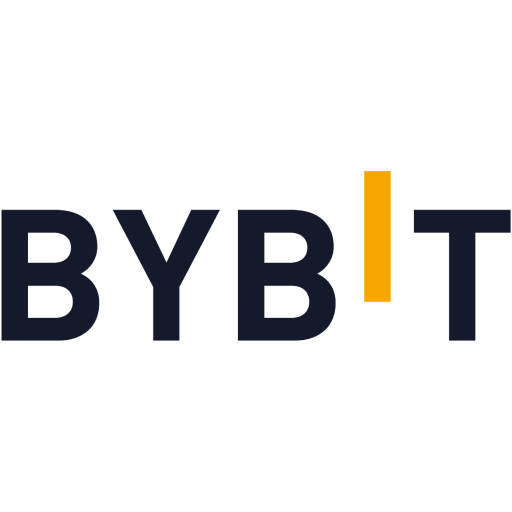HODL is the rallying cry for many crypto enthusiasts. This neologism signifies the act of holding onto a cryptocurrency to make a profit rather than selling it, even in the face of market fluctuations. However, there are more ways to make money from crypto than just “HODLing.” Here are the four top ways that really work in 2025.
Our methodology for choosing the top-performing platforms
Our comprehensive guide investigated the top four methods for earning cryptocurrencies: staking, trading, lending, and play-to-earn. These methods were carefully chosen based on various factors, most notably, the ease of entry, the level of expertise required to get started, and the potential for earnings.
Coinbase stands out as one of the leading platforms for generating income among these methods. Renowned for its security features and user-friendly interface, Coinbase offers flexible spreads ranging from 0.05% to 0.6%. Additionally, it excels in providing a wide range of educational resources to help users learn and earn.
Another popular choice for global users is KuCoin, which imposes a modest 0.1% maker and taker-fee for basic-tier users. KuCoin’s offerings extend beyond basic trading, including derivatives trading, mining, trading bots, NFTs, and various other products and services.
Binance is a prime source of substantial liquidity, recognized as the world’s largest exchange with a staggering 24-hour trading volume of $15,803,467,269. The platform boasts billions of dollars in assets and consistently high trading volumes. Meanwhile, OKX, consistently ranking among the top five centralized exchanges, currently records a trading volume of $3,364,440,238 as of 2025.
Bybit and Bydfi also come highly recommended due to their robust offerings. Bybit offers access to over 700 markets and nearly 500 cryptocurrencies, while Bydfi supports over 400 digital assets. Margex, sharing a similar profile, is yet another centralized exchange, supporting ten cryptocurrencies and a wide range of payment methods.
YouHodler distinguishes itself by providing flexible fiat and crypto borrowing options, accepting at least 50 assets as collateral. Additionally, Wirex, a payment service, offers reliable staking, loan, and card services. Lastly, Delta Investment Tracker garners recommendations for its comprehensive set of features, including real-time profit and loss metrics across various timeframes.
These methods were selected based on factors like security, fees, expertise needed, and earning potential, to name a few. When seeking ways to make cryptocurrencies, be it staking, trading, lending, or play-to-earn, consider your goals, the pros and cons, and conduct thorough research. Finally, invest only what you can afford to lose.
Learn more about BeInCrypto’s methodology verification here.
Top platforms for making money with cryptocurrency
OKX

- Our methodology for choosing the top-performing platforms
- How can you make money from crypto?
- 1. Crypto staking
- 2. Crypto trading
- 3. Crypto lending
- 4. Play-to-earn
- Honorable mentions
- Crypto airdrops and forks
- Crypto mining
- Crypto investing
- The pros and cons of making money with cryptocurrency
- Can you really make money with crypto?
- Invest with caution
How can you make money from crypto?
1. Crypto staking
Staking crypto is the act of “locking” up or escrowing your cryptocurrency into a proof-of-stake (PoS) protocol, decentralized application, or smart contract in order to receive something in return.
This return is typically more cryptocurrency, but may also take the form of some sort of privilege, such as governance over a decentralized application (DApp) or future perks. You can also stake to receive non-fungible token (NFTs).
In the real world, you can liken the act of staking to putting your money in a certificate of deposit (CD). A CD allows you to deposit your money into a special account that pays you to “lock up” your money for a specific period of time.
However, the comparison to a CD is a bit of an abstraction, and in reality, there are many different ways, reasons, processes and methods that go into staking cryptocurrency. If you’re keen to start staking you should keep a few things in mind.
The first is that each crypto has a specific rate of return. The total profit can vary depending on the price, inflation rate, protocol rules, fees collected, fees paid out in delegated staking, and many other factors. The reason why this is important is because some forms of staking are more profitable than others.
1. Select coin or token.
2. Learn the staking mechanism required to stake (smart contract, minimum stake, delegated staking, etc.
3. Choose an exchange, DApp, or smart contract.
4. Connect to smart contract or deposit cryptocurreny.
5. Start earning.
- • Passive income, depending on the method
- • More predictable rates of return
- • Outside of smart contract risk, volatility, and rug pulls, are relatively low-risk
- • Some protocols require a lock up period
- • Different levels of risk depending on the staking methods (e.g. slashing, competition w/ vertically integrated validators, etc.
Where to stake
2. Crypto trading
One of the ways to make money in crypto some may be more familiar with is trading. Trading is the act of buying and selling crypto, securities, such as stocks, bonds, currencies, and commodities, to make a profit. It should be noted that trading isn’t for everyone, especially the faint of heart. You can lose money.
That being said, there are many ways to approach trading, as it is more of an art than a science. As it is one of the more difficult ways to make money from crypto, here is a simplified list of a few things to keep in mind.
• Platforms: There are many places where you can go to trade, be it CEXs or DEXs. In summary, CEXs tend to have a better user experience and deeper liquidity at the cost of counterparty risk and regulatory risk. In addition to removing counterparty risk, DEXs also offer the added benefit of platform-wide revenue sharing. On the other hand, users incur gas fees for their trades and may experience low liquidity during periods of low interest.
• Reduce risks: There are a few ways that you can approach reducing risks, depending on what you trade. Diversifying your portfolio is a good way to mitigate some risks. However, choosing the right asset is also a way of being risk adverse.
•Education:Learn the fundamentals, learn how the financial products behave, and learn how to mitigate risk. Education also goes hand in hand with research and developing a trading plan. Always do all three before investing.
•Master your emotions: One of the first lessons you should learn before trading is to master your emotions. Whether choosing trading signals, a platform, or mitigating risks, none of these methods will be effective if you do not master your emotions.
1. Select an asset or financial instrument (e.g. futures or options) that you want to trade.
2. Choose an exchange (based on fees, trading rebates, liquidity, interface, etc).
3. Register an account and deposit capital.
4. Begin trading.
- Have potentially high returns, depending on the financial instrument
- The more you trade, the more you can earn as opposed to a fixed income
- Does not require a high level of technical skills
- The greater the reward, the greater the risks (losses)
- Crypto is still a relatively small market and can suffer from large price fluctuations impacting losses
Where to trade
Margex

3. Crypto lending
Crypto lending is the second method on this list that allows you to make money from passive income. It is also more straightforward to learn in concept, as you simply:
1. Supply a borrower with crypto.
2. They repay the crypto.
3. You receive interest in addition to the crypto that you lent out.
Unlike traditional finance, web3 does not institute credit scores to assess the creditworthiness of the borrower. Instead, the terms of repayment are hardcoded into the protocol.
When you loan cryptocurrency through a protocol, you do not know the borrower — nor do you have to. In TradFi this would be absurd, but not so much in crypto. You do not have to know or trust the borrower in crypto.
Typically LPs deposit crypto into a “pool” of cryptocurrency and users borrow from that pool. In order for borrowers to borrow crypto, they must overcollateralize their loan.
If the price of the collateral hits the liquidation threshold, the collateral is sold off and used to pay the LPs. If the loan is not liquidated, when the borrower repays the loan you will receive your crypto and fees/interest for issuing the loan.
Moreover, in crypto you can rehypothecate the crypto you loan or borrow to compound your earnings for more profit — another reason why it is one of the top methods for making money in crypto.
1. Select the asset that you would like to lend. It is important to choose an asset that has demand.
2. Select a platform that allows you to lend, ideally based on how much you are allowed to earn, the fees, and safety of the platform.
3. Create an entrance/ exit strategy or plan to stay risk adverse, as market downturns can affect your earnings.
4. Deposit your crypto onto the platform and start earning.
- Another form of passive income
- You can compound profits through yield farming
- Higher interest rates for lenders than traditional lending
- Sophisticated actors can game lending platforms to exploit capital in some cases
- Smart contract risk
Where to lend
4. Play-to-earn
Play-to-earn (P2E) is a way that you can make money from crypto and have fund while you’re doing it. P2E is a business model in the gaming industry, particularly in the blockchain and cryptocurrency space, where players can earn real-world rewards, often in the form of crypto or NFTs, by playing games.
These rewards are typically traded or sold on various platforms. This model contrasts with traditional gaming, where in-game assets usually don’t have real-world value.
P2E games often involve activities like completing tasks, winning battles, or progressing through game levels to earn these rewards. When you think about it, this not an entirely foreign concept, as E-sports has always been a popular source of income.
In this way, crypto just evens the playing field for the everyday users. Today, everyone can earn from playing games. As you can see below, the P2E market is just a baby, yet sits right under $10 billion. This contrasts to the current E-sports market, which is less than $3 billion.
1. Select a blockchain based game.
2. Complete the in-game tasks to receive crypto, NFTs, or rewards.
3. It is important to remember that the assets must have a demand to resell them on the secondary market.
- A low barrier to entry and minimal cost to start
- You can earn rewards to sell in the secondary market
- You have true ownership over the rewards you earn as opposed to traditional gaming
- Assets that you receive through rewards may not always have intrinsic value
- The oversaturation of P2E games can diminish the overall market
Honorable mentions
Crypto airdrops and forks
An airdrop is when a protocol or blockchain retroactively decides to reward users and “drop” or send them cryptocurrency or NFTs to reward their loyal use of the platform.
A blockchain fork occurs when there is a divergence in the blockchain protocol, leading to the creation of two separate paths: one that follows the old protocol, and another that branches off with a new protocol.
This often happens during a hard fork, resulting in two blockchains with identical account balances at the point of divergence. From a user’s perspective, this means they will have holdings in two separate blockchains.
However, these holdings are independent post-fork, and their respective values can differ based on several factors. It’s important to note that having coins on both blockchains does not necessarily equate to double the financial value.
1. Select an asset that you would like to receive an airdrop from.
2. Exercise caution, as there are many phishing scams out there, and some people can rug pull their own projects.
3. Farm for the airdrop by using the protocol, blockchain, or completing specified tasks.
4. Wait for the announcement of the airdrop terms to receive crypto.
- Forks a are cost-free way to earn crypto with minimal effort
- Airdrops have relatively unlimited upside and therefore price potential
- Both airdrops and forks reward legacy users of protocols and blockchains
- Many airdrops are more profitable to sell than HODLing
- Users must support forks for them to be profitable
Where to get airdrops
Crypto mining
Mining is the OG way to make money from crypto. Simply put, mining is the process by which coins are minted on a proof-of-work (PoW) blockchain.
It entails using computer hardware and software to run algorithms to secure a cryptocurrency network from adversarial behavior. This is a resource intensive process, as opposed to the more eco-friendly PoS.
In return, you receive the native coin of that particular blockchain for utilizing your resources to secure the network. It is considered the most censorship resistant way to enter the cryptocurrency market without utilizing a counterparty.
1. Choose a PoW cryptocurrency.
2. Purchase the necessary hardware (e.g. GPUs, ASICs, power supply units, fans, etc.).
3. Some cryptocurrencies may require you to join a mining pool to make profit, if you do not have a large scale operation.
4. Begin mining.
- Censorship resistant way to enter crypto
- Useful way to utilize stranded energy
- Allows you to contribute to the security of the blockchain while earning
- Can have a high technical barrier to entry
- Highly competitive market
Where to mine
Crypto investing
Whether as a bonified crypto venture capitalist (VC), an accredited investor, or a retail investor, investing in crypto is the most obvious way to make money from crypto. Seeing as how investing itself needs no explanation, here are a few things to keep in mind:
• Diversify risk: Some people like to use the 70/30 portfolio. 70% in assets that you can earn from capital gains, 30% in assets that pay you to own them. You can also hold assets that are likened to digital gold and digital silver for long-term price appreciation. The rest of your portfolio can be potential unicorns, preferably a smaller percentage.
• Fundamental analysis: When you are choosing which coins and tokens to hold, it is safer to choose assets that have intrinsic value. This is determined by their use case, or the problems they are trying to solve and their ability to actually solve them.
• Investment goals: Needless to say, your investment goals should be realistically attainable. If you are trying to become an overnight millionaire, you are in the wrong business. For many investors, a 10% yearly return is the cream of the crop.
• Patience: The market can remain irrational longer than you can remain rational. In other words, good projects can fail, and scams can pump. This does not mean that you made a bad decision by avoiding projects with bad fundamentals. Even billion dollar VCs will have one or two unicorn projects that offsets multiple losses. Stay patient and stick to a plan. If the plan fails then readjust.
1. Learn fundamental analysis.
2. Set aside a portion of your net worth/ income for investing and another portion for paying your bills.
3. Create an investment strategy and goals.
4. Begin investing.
- Can have a higher upside than fixed returns
- Investing in crypto gems does not require accreditation
- Crypto is the best performing asset class in history
- Higher returns usually amounts to higher risks
- You can suffer many losses, or may have to wait a long time to gain a significant profit
Why might you need a portfolio tracker?
If you have been in crypto for a while or plan to be, you will more than likely have amassed a diverse portfolio across multiple DApps, blockchains, protocols, and exchanges. You will eventually need a crypto portfolio tracker.
These are particularly useful for bookkeeping, tracking profits and losses, entry and exit prices, and tax preparation. Much of the world has yet to catch up to the crypto world; therefore, it is painstakingly difficult to find the right portfolio tracker that suits your crypto native needs.
Delta Investment Tracker

The pros and cons of making money with cryptocurrency
| Aspect | Traditional finance (TradFi) | Cryptocurrency (crypto) |
|---|---|---|
| Accessibility | Barriers to entry due to laws and regulations. Often favors institutional investors. | More accessible to the general public. Lower entry barriers, offering opportunities for individual investors. |
| Market maturity | Mature and well-established market. Tapped market with limited high-growth opportunities. | Still emerging and developing. High-growth potential, though accompanied by higher risk. |
| Risk profile | The Cantillon effect, where proximity to money creation favors the wealthy. Institutional money often dominates. | High risk and volatility. Subject to market manipulation and less regulatory protection. |
| Learning Curve | Relatively familiar and understood by the public. Established systems and support for investors. | High learning curve to navigate safely. Fragmented market with varying platforms and technologies. |
| Earning Potential | Often limited to traditional investment vehicles like stocks and bonds. Influenced by the Matthew Effect, where the rich tend to get richer. | Innovative ways to earn (e.g., staking, yield farming). Potentially high rewards, but also high risk. |
| Equality | The Cantillon effect where proximity to money creation favors the wealthy. Institutional money often dominates. | Seen as a great equalizer. Designed to offer a more even playing field from the bottom up. |
| Security | Generally higher levels of security and investor protection. Established legal frameworks for recourse. | Security risks, including wallet compromises and hacks. Limited or no legal recourse in many cases. |
Can you really make money with crypto?
While we have documented many solid ways to make money with crypto, note that each method has its own drawbacks, risks, and barriers. Take Ethereum staking, for example.
As a smart contract platform, Ethereum requires nodes to store and compute extensive data, demanding more sophisticated and expensive hardware. This necessity fuels competition for block space and drives up transaction fees, leading to Miner Extractable Value (MEV). The intense competition for MEV has evolved into order flow auctions (OFA) and proposer builder separation (PBS), compelling block builders to integrate with searchers, relays, and block proposers.
Consequently, profitable Ethereum staking, beyond delegated or liquid staking derivatives (LSD), has become an arena of high competitiveness. One of the biggest staking mistakes Ethereum stakers made pre-merge was believed that staking would be cost-free and hands-off. So, while you can make money from crypto, it is important to note that if anyone could be profitable from doing it, everyone would do it.
Invest with caution
As stated previously, crypto is still somewhat of an untapped market. There are currently various ways to make money from crypto without dealing with the same hurdles that you may face in TradFi.
However, always remember that the greater the reward, the greater the risk. You should never spend more than you can comfortably afford to lose, and there is no such thing as a free lunch. Everything has a price, whether an operating cost or an opportunity cost. Be wary of crypto scams: if something sounds too good to be true, it probably is.
Frequently asked questions
There are risks associated with every type of investment, cryptocurrency included. Beyond this, some cryptocurrencies are safer to invest in than others. Investors should also keep in mind that there are risks associated even with safe investments.
In many countries around the world cryptocurrency is taxable. Investors should stay aware of their particular jurisdiction and tax laws. If necessary, you should also utilize a tax professional to avoid any legal repercussions of filing your taxes improperly.
It is possible to make $100 a day trading. However, this is highly unlikely in the literal sense. Most profitable traders have losing days, while still being profitable for the month or the year.
It is possible for a beginner to make money trading in cryptocurrency; however, it is unlikely. Trading takes time to learn and longer to master. While some people may have a natural inclination for trading, this is not realistic for most new traders.
To start trading you must first educate yourself on how to trade. Then you will need to practice and find the strategies and instruments that work for you. Lastly, you will need to select a platform to trade on.
Whether Bitcoin is halal (permissible) or haram (forbidden) is subject to differing interpretations by scholars. Some argue that Bitcoin is halal, considering it as a digital asset or currency that facilitates transactions without intrinsic harm. However, others view it as haram due to its high volatility and speculative nature, which can resemble gambling, forbidden in Islam.
It is extremely difficult to earn crypto without money. In many cases you will have to spend some capital. Airdrops represent a low barrier to entry and typically cost minimized way of earning cryptocurrency. However, even for airdrops, you will have to commit some on-chain transaction in order to receive crypto, and the more transactions you have the more you receive in many cases.
Disclaimer
In line with the Trust Project guidelines, the educational content on this website is offered in good faith and for general information purposes only. BeInCrypto prioritizes providing high-quality information, taking the time to research and create informative content for readers. While partners may reward the company with commissions for placements in articles, these commissions do not influence the unbiased, honest, and helpful content creation process. Any action taken by the reader based on this information is strictly at their own risk. Please note that our Terms and Conditions, Privacy Policy, and Disclaimers have been updated.











